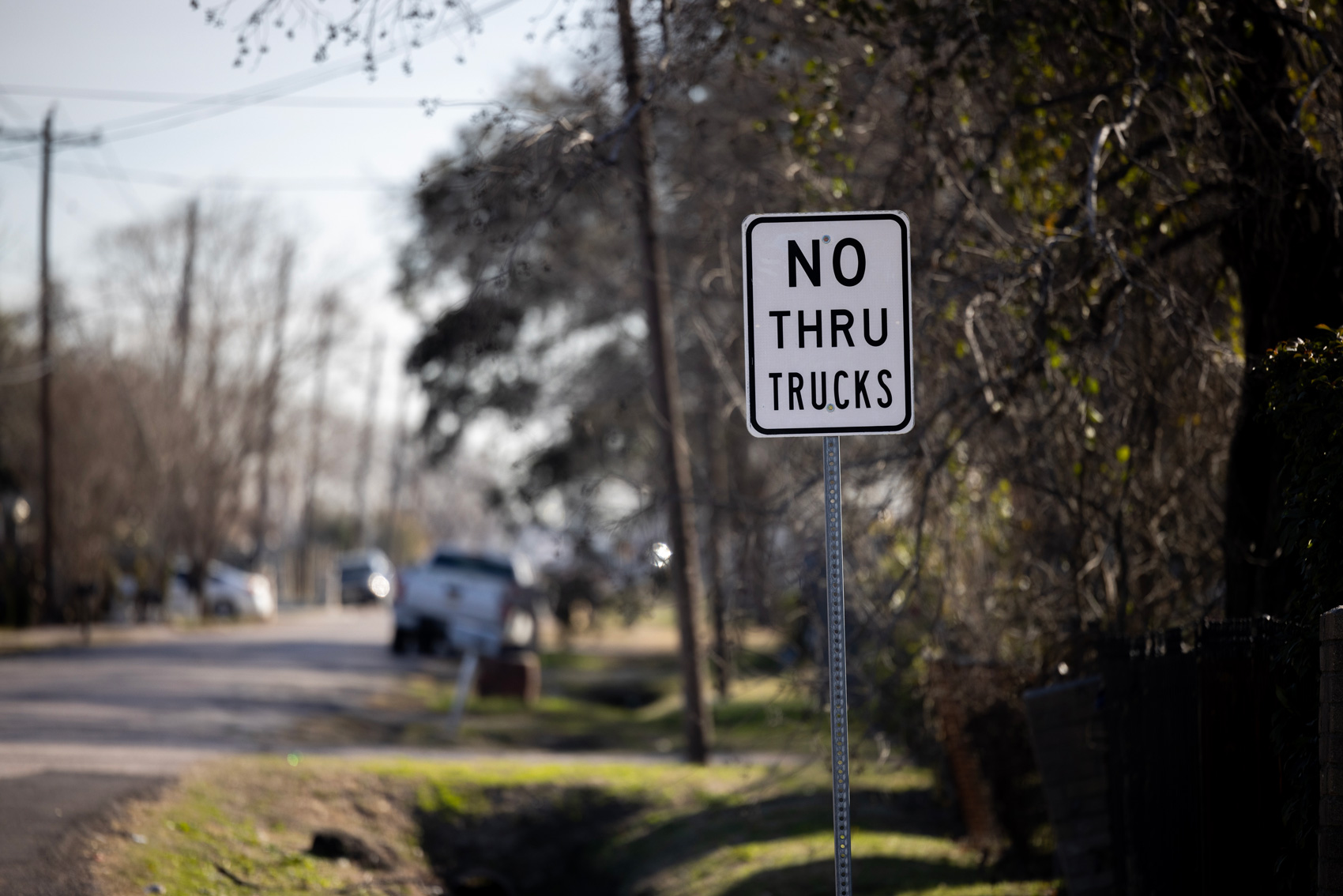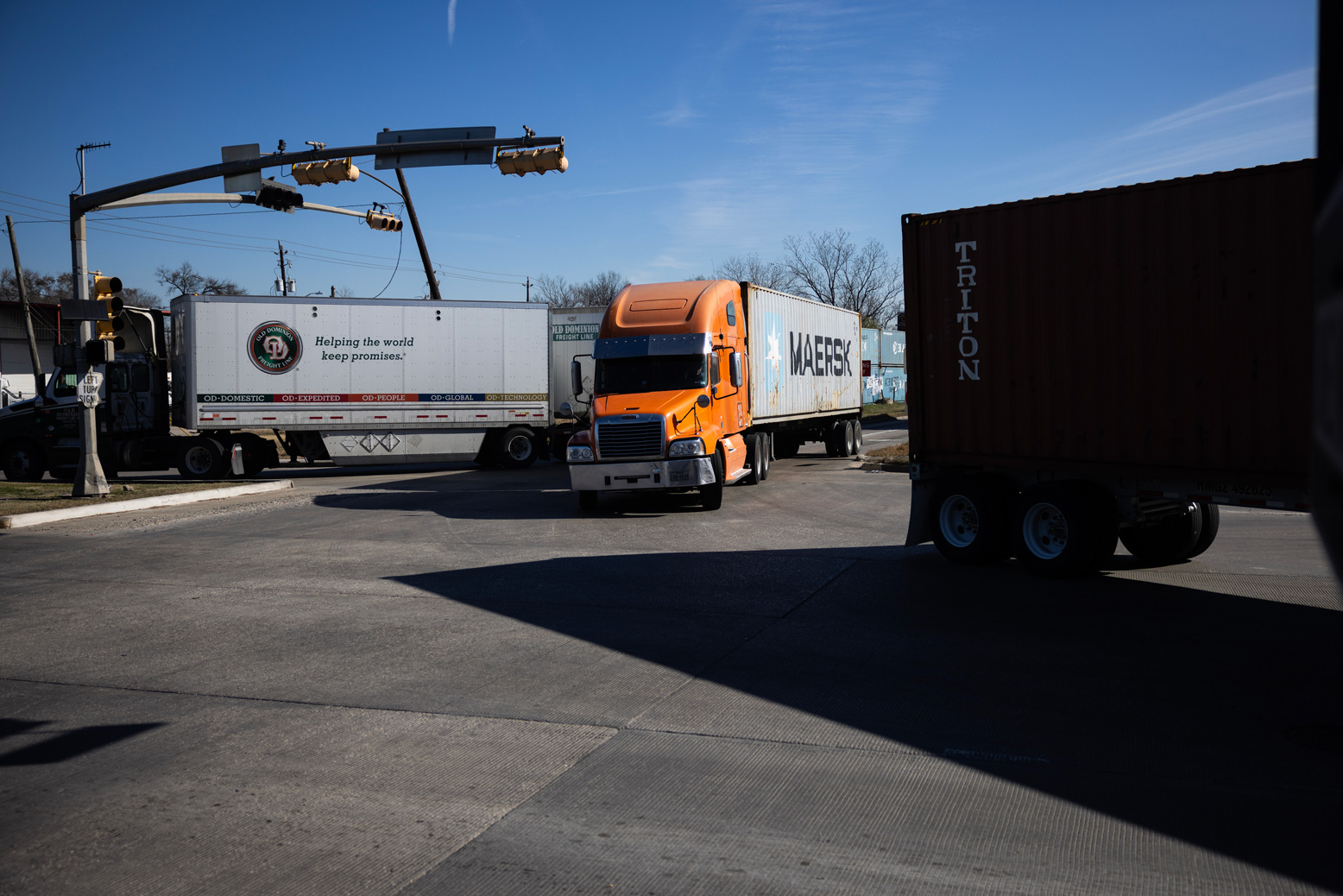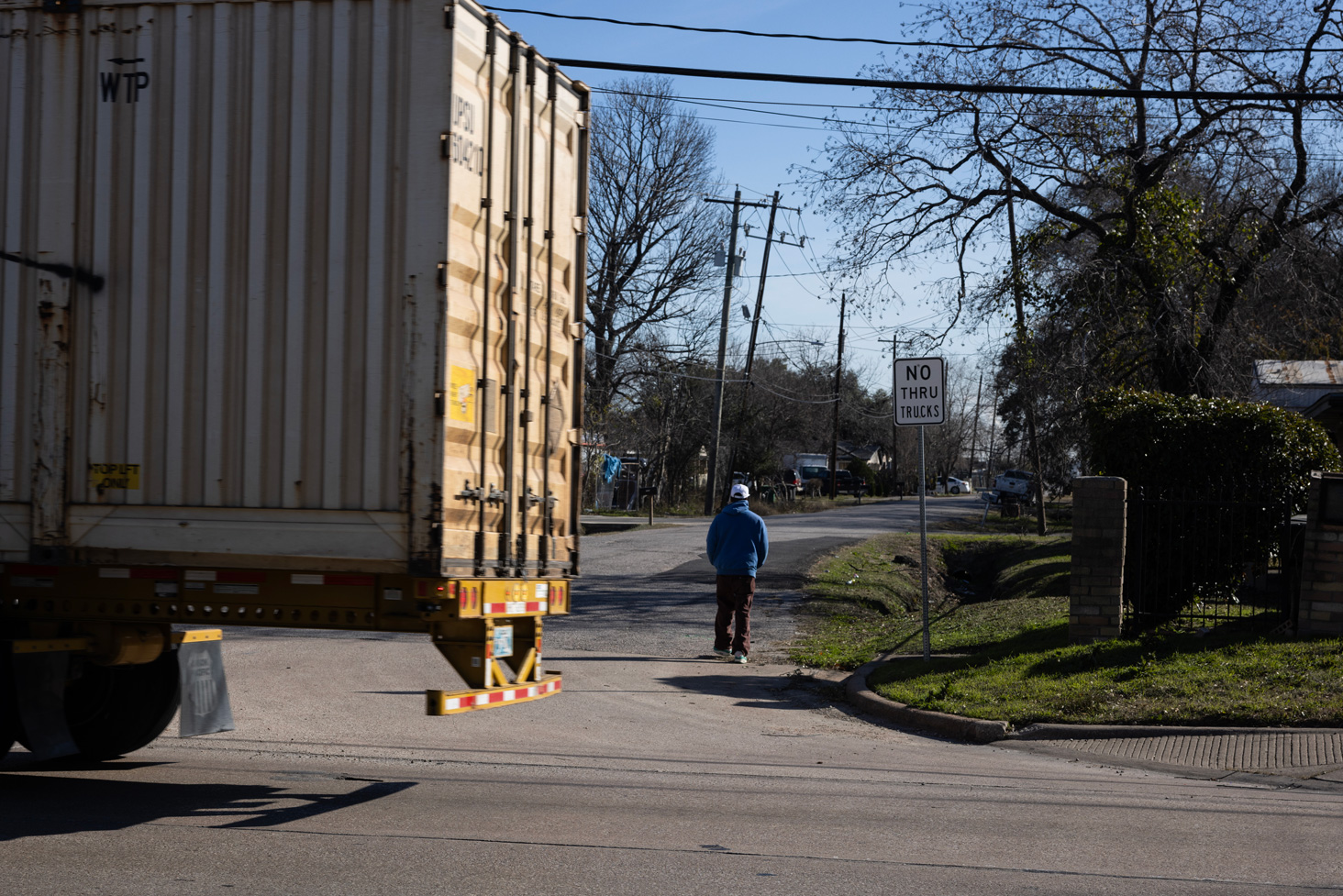|
Getting your Trinity Audio player ready...
|
The light turned green, and out they poured. From the North Loop 610 East exit ramp came a series of commercial trucks, making wide, sweeping turns left or right onto roads lined with homes and businesses.
The trucks rumbled down Wayside Drive in the Settegast neighborhood, on Houston’s northeast side, flinging debris and gravel to the side of the road.
Christopher Fontenette, owner and operator of the Str8 Flavour food truck, has set up next to the Wayside Supermarket almost every day since 2020 to smoke ribs, brisket and homemade hot links.
The location is the perfect vantage point to see the damage trucks do to local roads. He sees the masses of rocks, gravel, and other debris littering the road, and shakes his head at the potholes and patchwork of street repairs.

“They fixed (that pothole) about four times in the last three-and-a-half, four months,” Fontenette said, pointing to a spot on Wayside just north of Fields Street. “It’s a waste of taxpayer’s money.”
The city of Houston is aware of the problems caused by heavy truck traffic. As part of its Vision Zero initiative to reduce traffic deaths and increase safety on roads, the city has set out to chart a Houston-wide freight network that takes into account existing problems with truck traffic.
While there are “No Through Trucks” signs throughout the city, there is no formal plan dictating where trucks can go. Those signs stem from an ordinance that regulates weight limits on specific streets, according to David Fields, Houston’s chief transportation planner.
The city began work on a new truck plan last March.
According to the Houston-Galveston Area Council, Houston will see a 60 percent increase in freight tonnage between 2015 and 2040, driven by population growth, economic development and increasing trade. That anticipated growth could present challenges surrounding the moving of freight throughout the city, according to a report released last May.
Data from the Texas Department of Transportation shows almost 350,000 commercial trips began or ended within Houston’s city limits in the spring of 2021.
Additionally, the city recorded more than 4,700 truck-related crashes along non-interstate roadways between 2018 and 2022, according to the city’s own data and from TxDOT.
“When we looked at the data, we saw trucks are involved in crashes at a higher rate than their numbers would indicate,” Fields said. “It’s disproportionately high for trucks.”
Front and center for city officials is Settegast. As the city compiled data on truck crashes, the neighborhood just north of Highway 90 outside the 610 Loop had one of the highest concentrations of incidents, making it a perfect candidate to pilot the truck plan.
Education effort
Roaming the Settegast neighborhood, there are plenty of signs of freight traffic: truck cabs without trailers are parked in front of homes, and properties filled with trucking equipment can be found every few blocks.
Preparation for the pilot has involved community input, including meetings with residents, businesses, and other stakeholders, along with a survey and neighborhood tours.
The pilot will involve signs indicating which roads are designated truck routes and which are not. The Houston Police Department will be tasked with “targeted enforcement,” looking out for trucks using local roads as through routes.

For planning purposes, a commercial truck is defined as any vehicle weighing more than 26,000 pounds, including the load being carried; any vehicle with three or more axles; or any vehicle carrying large amounts of hazardous materials or solid waste.
The plan is not about telling truck drivers they cannot drive on Houston roads, nor will it prevent them from making deliveries to destinations not on the route plan. Upon demand, however, drivers will have to provide written verification of pick-ups, deliveries, or destinations. Drivers who live and operate outside the neighborhood still will be allowed to access those locations.
“We are not saying, you know, you can’t be here, you can’t use our road network,” Fields said. “But we are trying to rationalize and be very clear about the better places for trucks to be and the places they really don’t need to be.”
Fields does not expect many tickets to be issued during the pilot, as the focus will be on education and taking note of how many times drivers need to be educated.
That information, community meetings and 311 requests will be vital to determining what else needs to be done to improve trucking around the city. Fields said he wants companies, such as Google Maps and Waze, eventually to incorporate the truck plan in their navigation services.
Before the plan can get there, however, it needs to produce a real difference in Settegast. Complicating the issue in Settegast is a lack of sidewalks and an abundance of narrow streets.
Fontenette said he has seen trucks speeding down Wayside and turning in and out of the side streets, and he fears for the safety of residents
“There’s children all through here, and as you can see, the streets are all broken up,” he said.
Lingering concerns
While safety is a key part of the plan, the goals also include mitigating damage to local roads and improving the quality of life in Houston neighborhoods. That includes trucks parked on residential streets overnight.
Although a route has been put together, there is no firm start date for the pilot as the new Whitmire administration reviews ongoing plans in every department. When it finally kicks off, the city’s Department of Planning and Development will focus on where the plan is succeeding and failing before expanding it across the entire city this summer.
Despite the community meetings, details of the truck plan have not spread throughout Settegast.
Fontenette said he had heard whispers of something coming, but he had heard trucks would be banned from using Wayside.
Vera Waites had not heard of a plan, but she definitely hears daily freight traffic. She lives on the corner of Wayside and Bonaire Street, where a “No Through Trucks” sign is displayed prominently. Still, Waites says tractor trailers rumble past, shaking her windows.
Waving at a truck sign, Waites said truck drivers routinely disregard the warnings. “You got all kinds of trucks coming through here,” she said.
Parker McKee, a rental account manager with truck rental company Rush Enterprises, attended a planning session hosted by the Houston Movers Association. He said the truck plan was good in theory, but he saw issues that could be difficult to mitigate.
“It’s going to be a tough thing to do for those businesses doing work out of their houses and need access out of their houses,” McKee said. “It’ll be nice and clear up some traffic and congestion, but it’s going to be a big project and it’s going to take some time.”
Fields said the city had been in communication with trucking organizations and companies, but Marcia Faschingbauer, president and CEO of trucking and warehouse company Excargo Services, said she had not heard much about the plan since it was announced around Thanksgiving.
“We are concerned that any change to the supply chain may add cost to the customers,” Faschingbauer said in an email. “We are not sure that is coordinated with plans for other solutions to lessen traffic to and from the Port (of Houston) and around the city.”





